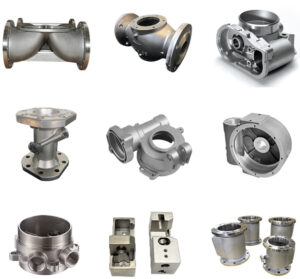
Investment Casting: The Basics of the Molding Process
Investment casting is a precision casting process that involves the use of a disposable mold or “investment” to create complex metal parts. The process begins with the creation of a pattern, which represents the desired shape of the final casting. This pattern is then surrounded by a refractory material, usually silica sand, to form a mold. Once the mold is prepared, molten metal is poured into the mold and allowed to cool and solidify. Once the metal has solidified, the mold is removed, leaving behind the desired casting. This process is used to create high-quality, accurate castings for a variety of industries, including aerospace, automotive, medical, and more.
The Pattern: The First Step in the Investment Casting Process
The first step in the investment casting process is the creation of the pattern. The pattern is a small, disposable replica of the final casting that is made from a material that can be easily destroyed, such as wax or plastic. The pattern is designed to faithfully reproduce the shape and dimensions of the final casting, ensuring accuracy and repeatability. Once the pattern is created, it is used to form the mold.
Forming the Mold: The Next Step in the Investment Casting Process
The next step in the investment casting process is the formation of the mold. The mold is created by surrounding the pattern with a refractory material, usually silica sand, which hardens to form the walls of the mold. The refractory material must be able to withstand high temperatures and mechanical stresses during the casting process. A shell or “investment” is then added to the mold to strengthen its structure and to ensure that the casting does not adhere to the mold during the casting process. Once the mold is prepared, molten metal is poured into the mold and allowed to cool and solidify.
Casting the Metal: The Third Step in the Investment Casting Process
The third step in the investment casting process is the casting of the metal. Molten metal is poured into the mold, which has been preheated to a high temperature to ensure that the metal flows easily into all areas of the mold. The molten metal is allowed to cool and solidify, taking on the shape of the mold and achieving the desired dimensions and tolerances. Once the metal has solidified, the mold is removed, leaving behind the desired casting.
Removing the Mold: The Last Step in the Investment Casting Process
The last step in the investment casting process is the removal of the mold from the casting. This process involves breaking down or removing all sections of the mold surrounding the casting to expose the final casting. This process must be carried out carefully to ensure that no damage is done to the casting and that all remaining portions of the mold are removed completely. Once the mold has been removed, any remaining sand or other debris can be cleaned off of the casting using brushes or compressed air. The resulting casting will then be ready for any necessary finishing operations, such as machining or polishing.
Quality Control: Inspecting and Finishing Investment Castings
Investment castings are typically subject to strict quality control measures to ensure accuracy and repeatability in production. Quality control begins during the casting process itself, with operators monitoring key parameters such as temperature, pressure, and pouring time to ensure that the casting solidifies within tolerance. Following casting removal from the mold, further quality control measures are taken to inspect and finish each casting for dimensional accuracy, surface finish, and material properties.
Inspecting investment castings typically involves using gauges and other measuring devices to check critical dimensions and tolerances of each casting against engineering drawings or specifications. Surface finish can be evaluated by visual inspection or using profilometers to measure roughness or texture of the surface. Material properties such as tensile strength, hardness, and impact resistance may also be tested using appropriate metallurgical techniques.
For finishing investment castings, operations may range from simple cleaning operations using abrasives or solvents to remove excess sand or other debris from the surface, to more complex machining or grinding operations to achieve final dimensions and surface finish requirements. Polishing or buffing may also be performed to achieve a high-quality mirror finish on critical surfaces of investment castings. Following completion of all quality control measures, final acceptance testing may be performed to ensure that each casting meets customer requirements and specifications for performance and durability.
Summary: The Investment Casting Process from Start to Finish
Investment casting is a highly versatile manufacturing process that utilizes a refractory mold or “investment” to create complex metal parts with high accuracy and repeatability. The process begins with pattern creation using a disposable material such as wax or plastic, which is then surrounded by refractory sand to form a mold. Molten metal is poured into this preheated mold and allowed to solidify as it takes on the shape
